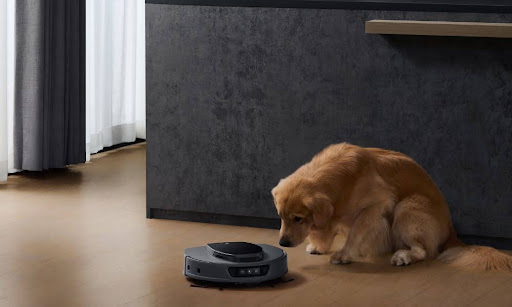With the increasing popularity of smart home devices, vacuum robots have become a must-have for efficient, hands-free cleaning. One of the key elements that determines the effectiveness of a vacuum robot is its cleaning path and navigation algorithm. These technologies ensure the robot can navigate the environment, avoid obstacles, and clean every inch of your home.
But how do these robots ensure comprehensive coverage? Let’s dive into the various technologies and strategies that make it possible.
Overview of Navigation Technologies in Vacuum Robots
Vacuum robots employ a variety of navigation technologies, each contributing to their ability to clean efficiently.
- Traditional Navigation vs. Smart Navigation
Traditional robots used random, chaotic movement patterns. While this might have worked in some cases, it often resulted in missed spots and inefficient cleaning. Modern vacuum robots use more advanced technologies, enabling them to map and navigate the environment methodically. - Common Navigation Methods
- Infrared Navigation: Infrared sensors detect obstacles and guide the robot’s path. Although it’s relatively simple, it’s not always the most accurate.
- LIDAR (Laser Radar): One of the most accurate systems, LIDAR uses lasers to scan the environment and create a precise map of the area. This method provides accurate distance measurements and allows the robot to build an efficient route.
- Visual Navigation: Robots equipped with cameras can use computer vision to analyze the environment and create a virtual map of the space.
- Ultrasonic Navigation: Ultrasonic sensors measure distances and help the robot avoid obstacles by emitting sound waves and analyzing their reflection.
Cleaning Path Algorithms of Vacuum Robots
Vacuum robots rely on different algorithms to ensure they cover the entire floor area and avoid missing any spots. The path taken by the robot depends on the algorithm it uses.
- Coverage Algorithms
Various path algorithms help robots cover the floor effectively:- Zigzag Path: Robots follow a back-and-forth path, ensuring even coverage from one end to the other. This is the most common algorithm and is highly effective for large rooms.
- Spiral Path: Best for smaller rooms, the robot starts cleaning from the edges and gradually moves inward, forming a spiral pattern.
- Random Path: Early models used random movements to clean the space. While effective in some ways, they often missed spots due to unpredictable movement patterns.
- Smart Path Optimization
- SLAM (Simultaneous Localization and Mapping): This technology allows the robot to create a map of the area while simultaneously tracking its location. The robot constantly updates its position and adjusts its cleaning path based on the environment.
- Area Segmentation and Priority Cleaning: For larger spaces, robots divide the area into smaller segments and prioritize cleaning based on layout. This ensures that no area is overlooked, even in complex rooms.
How Vacuum Robots Ensure Complete Coverage
Now, let’s focus on how these robots ensure complete coverage of your home.
- Path Planning and Overlapping Cleaning
Effective path planning is essential. Robots need to avoid missing any areas, and overlapping cleaning paths ensure no spot is left dirty. Advanced robots often have memory functions that help them track areas already cleaned, ensuring new sections are addressed. - Obstacle Avoidance and Intelligent Adjustment
The robot’s sensors constantly monitor the surroundings, allowing it to detect and avoid obstacles. When the robot encounters furniture or other objects, it changes its direction, adjusts its path, and continues cleaning. High-end models can detect even the smallest obstacles, such as socks or pet toys, and adapt their path accordingly. - Self-Learning and Path Optimization
Many vacuum robots are equipped with AI algorithms that enable them to learn from their environment. As the robot cleans, it learns the layout of your home, remembers previous cleaning paths, and continuously improves its cleaning strategy for better efficiency.
Mop Robots and Their Role in Cleaning Efficiency
While vacuum robots are excellent at picking up dust, dirt, and debris, a mop robot complements them by providing an additional layer of cleaning. Once a vacuum robot has completed its task, a mop robot can take over, ensuring that floors are not only free of debris but also spotless and sanitized. Some advanced models even integrate vacuuming and mopping functions, allowing users to switch between cleaning modes based on their needs.
Enhancing Cleaning Efficiency: Strategies for Better Coverage
To maximize cleaning efficiency, vacuum robots employ several strategies:
- Multi-Sensor Coordination
Modern vacuum robots use multiple sensors working together to improve navigation and cleaning. Combining infrared, ultrasonic, LIDAR, and even cameras enables robots to navigate more accurately and clean more thoroughly. This multi-sensor approach helps robots adapt to different floor types and complex room layouts. - Integration with Smart Home Systems
Many vacuum robots can connect to smart home systems. This connectivity allows users to control the robot via voice commands (e.g., using Alexa or Google Assistant) and schedule cleaning sessions. Smart integration also enables the robot to adjust its cleaning mode based on user preferences, ensuring optimal performance.
Common Challenges and Limitations
Despite their advanced algorithms, vacuum robots face several challenges in providing thorough cleaning:
- Dead Zones and Obstacle Handling
One common issue is cleaning around obstacles such as furniture legs or small crevices. While robots with advanced navigation systems can navigate around most objects, some smaller areas, like beneath low furniture, may still be difficult to reach. However, the latest models use specialized cleaning patterns and sensors to tackle these hard-to-reach places. - Battery Life and Path Adjustments
Vacuum robots rely on rechargeable batteries, which may limit their ability to clean large spaces in a single charge. When battery life runs low, most robots will automatically return to their charging stations and resume cleaning from where they left off, ensuring the entire area is eventually covered.
Conclusion
Vacuum robots have revolutionized home cleaning by offering an intelligent, efficient, and hands-free solution. Their advanced cleaning path algorithms and navigation technologies ensure that even the most challenging spaces are covered. From LIDAR mapping to AI-driven path optimization, these robots are constantly evolving to provide smarter and more efficient cleaning.
Additionally, mop robots play a crucial role in achieving spotless floors by adding a mopping function to the cleaning process. As these technologies continue to improve, vacuum and mop robots will play an even greater role in maintaining clean homes with minimal human intervention.



